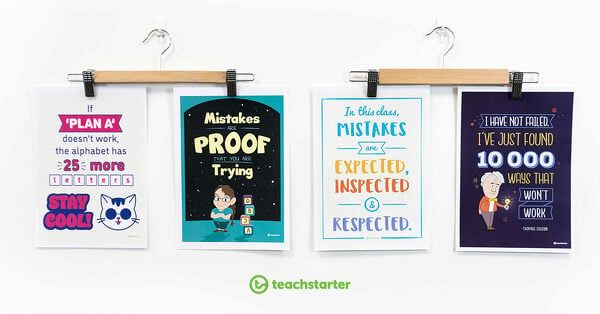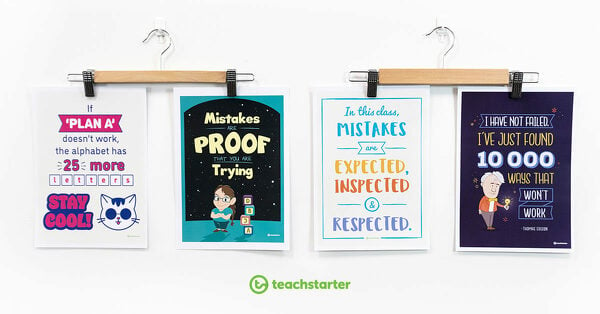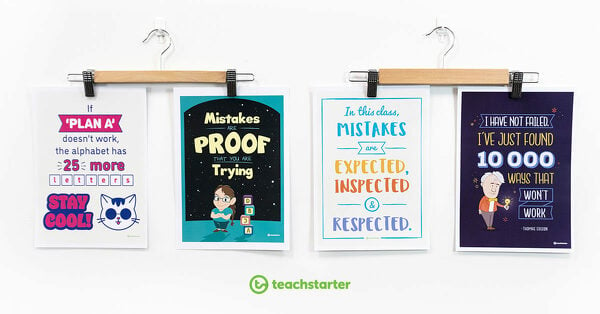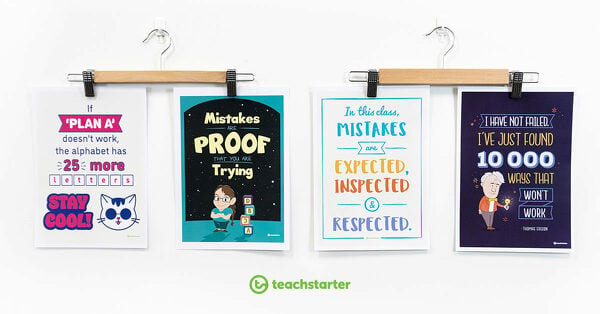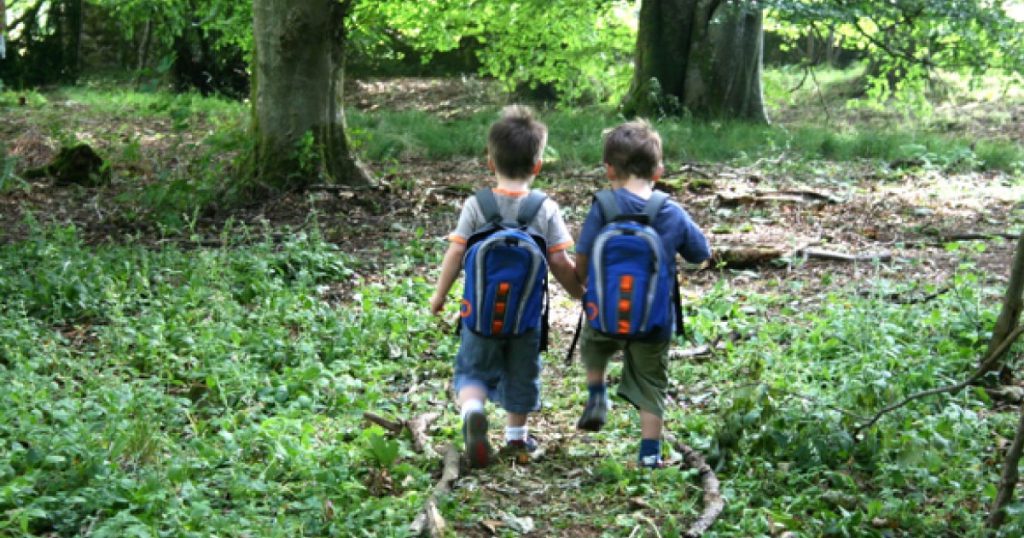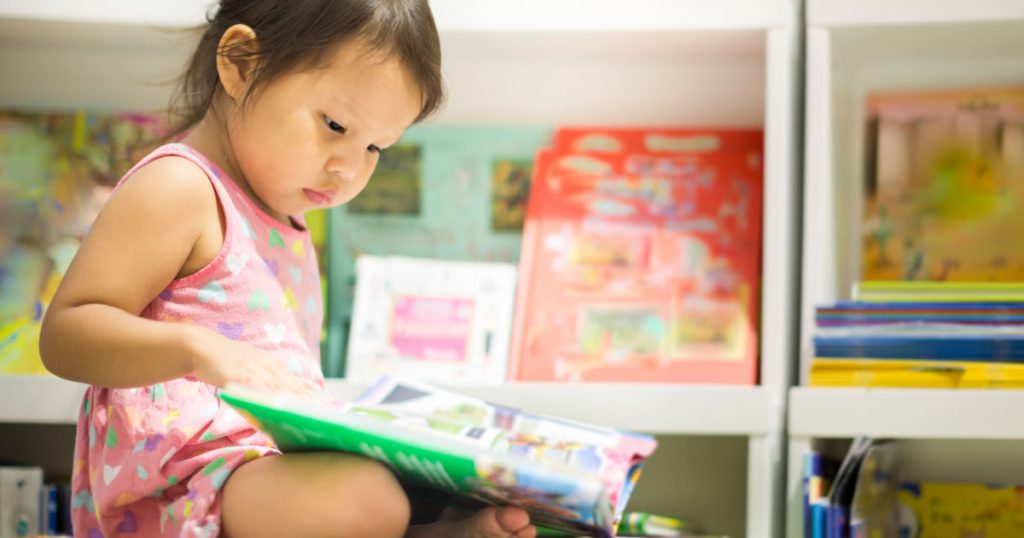Perfectionism is exhausting for everyone who feels it … and it’s on the rise among American kids. By the time they hit adolescence, as much as 25 percent of kids have “maladaptive perfectionism,” working so hard to be perfect that it causes pain.
For perfectionist students, school days are one roller coaster after another. They experience extreme highs from feelings of success and plummeting lows due to feelings of failure. In short, perfectionism is a perceived or real pressure that we put on ourselves to make everything perfect.
So what’s a teacher to do in a high-stress world where students are increasingly stressed out by perfectionism? Let’s look at some practical teaching strategies to support perfectionist students at home and at school.
Before we begin, a disclaimer… there is no perfect. What is perfect anyway? There is no such thing as failure. Failure is simply a chance to try again and grow.
The Perfectionist Profile
Perfectionist students are often high achievers who are conscientious and highly motivated. They may be among the quirkiest characters in your classroom who show a real passion for the things that they want to achieve. But with that comes a flip side too. Perfectionist students often show heightened emotional sensitivity and respond in kind when things don’t go as planned.
Perfectionist students are often highly driven and determined to get what it is that they are striving for. They may get a fixed idea in their head and not be able to deviate from their plan. They may be highly competitive and find it very challenging to manage their response if and when they do not succeed.
Perfectionist students may repeat a process or activity over and again until they get to a place where they feel it is perfect. A perfectionist student might often:
- Become distressed, angry, and frustrated when they deem things imperfect
- Be self-critical
- Avoid or decline to try new things
- Be slow to finish tasks and procrastinate
- give up when things get challenging
- think in all or nothing terms.
Remember no one size fits all and each individual case is unique.
Re-think Failure
First and foremost it’s imperative to create a classroom culture where it is OK to fail. Our students need to be reassured that failure is the key to success! For a quick, fun, and easy way to share this important message, show this YouTube clip taken from the Walt Disney movie, Meet the Robinsons.
Bouncing Back Box
Celebrating failures and times when we have not given up helps to put a new spin on things!
During my time in the classroom teaching Year 3, I created a Bounce Back Box and my students loved it. The main idea behind the Bounce Back Box was to recognize notable times when students had experienced failure, bounced back, and tried again.
In this example, I used our editable tray labels from our Owls Classroom Theme Pack to create these inviting sentence starter cards. Encourage your students to make a note of times when they bounced back from making a mistake or felt feelings associated with failure. Find some time on Friday to share experiences that have been posted in the Bounce Back Box and respond with applause!
Write It On the Walls
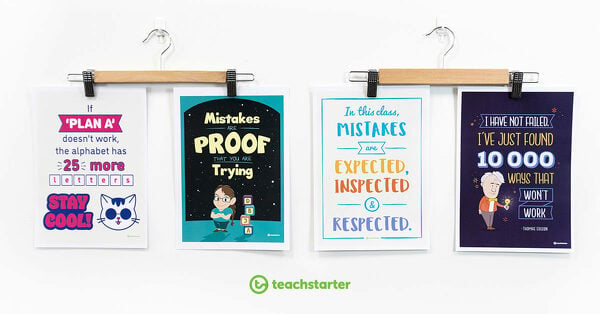 Be sure to create a classroom display that shouts from the rooftops that mistakes are ok. I created this display by using coat hangers and posters chosen from our positivity collection. My top pick posters for the perfectionist student are:
Be sure to create a classroom display that shouts from the rooftops that mistakes are ok. I created this display by using coat hangers and posters chosen from our positivity collection. My top pick posters for the perfectionist student are:
- In this class, Mistakes are Expected, Inspected and Respected – Classroom Poster
- ‘Mistakes Are Proof That You Are Trying’ – Motivational Poster
- I Have Not Failed – Motivational Poster
There’s Always Plan B
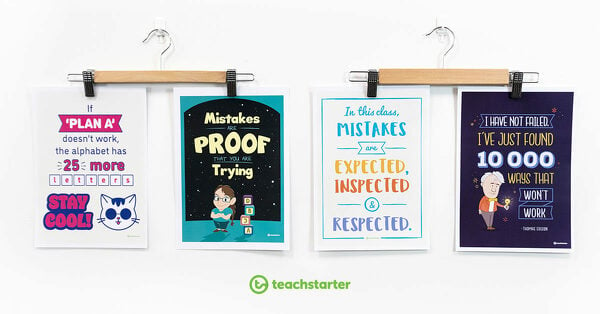 Teach your students that if plan A doesn’t work there are 25 more letters. Use our Quote Poster – If Plan A as a daily reminder that even if your ideal plan does not work out, that you can always rely on other options.
Teach your students that if plan A doesn’t work there are 25 more letters. Use our Quote Poster – If Plan A as a daily reminder that even if your ideal plan does not work out, that you can always rely on other options.
Provide Strategies

Provide perfectionist students with a few simple and effective strategies to use when they experience failure.
Bubble Monsters are a simple and effective way to provide a distraction and encourage students to take deep breaths. Put a small amount of hand soap into a jar or plastic container, and add a small amount of water. Next, encourage students to full their stomaches with air and blow down through the straw. Challenge your student to see if they can make the bubbles spill over the top of the container!
Other strategies to help perfectionist students include:
- Taking 3 deep breaths
- Count down from 10-0
- Take some time in the chill-out area
- Squeeze a stress ball.
Positive Self-Talk
Students who wrestle with perfectionism tend to have a critical voice in their heads. This unhelpful voice may be telling them that their work isn’t good enough, they’re not trying hard enough and they’re not good enough.
Don’t underestimate the power you have to teach your students to speak kindly to themselves.
Have some fun with your class and practice saying these positive mantras out loud!
I am putting in my best effort.
My work is brilliant because it’s mine.
I am doing really well.
I am brave and strong.
I am a genius!
Rehearse Failure
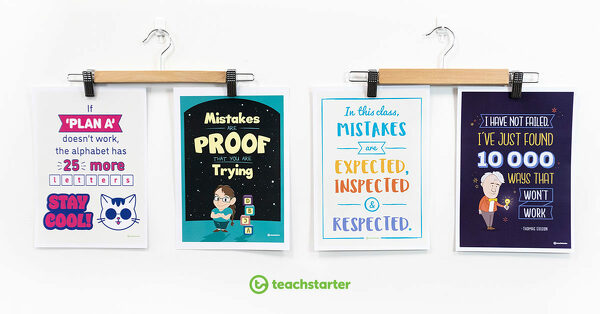 Rehearsing what deemed failure might look and feel like before it happens, it as a brilliant strategy to support perfectionist students. Drama and role-play provide a great opportunity for students to act out everyday scenarios of failure and to have fun! Why not use our Elements of Drama – Information Cards to get your drama lesson off to a flying start?
Rehearsing what deemed failure might look and feel like before it happens, it as a brilliant strategy to support perfectionist students. Drama and role-play provide a great opportunity for students to act out everyday scenarios of failure and to have fun! Why not use our Elements of Drama – Information Cards to get your drama lesson off to a flying start?
- Arrange your students into small groups.
- Provide each group with a scenario (for example, they have come last in a running race).
- Ask each group to rehearse two different reactions to this failure- one positive and one negative.
As a class, discuss why it is beneficial to respond positively to failure and why failure is a good thing. Don’t forget, it’s important to let your students know that you are not making fun of feelings.
Provide Opportunities for Failure
Every child needs the opportunity to experience failure. After all, it’s part of life. Perfectionist students, in particular, will benefit from taking part in a variety of activities in your programming that provide an opportunity to fail as well as succeed. Ideal activities include:
- board games
- outdoor games
- Lucky Ducks – Chance Game
- STEM challenges
- challenging literacy or numeracy tasks.
Encourage perfectionist students to draw on the coping strategies that they have learned and to deal with the failures as well as the wins.
Social Stories for Perfectionist Students
Social stories can help perfectionist students develop greater social understanding and help them to manage their response to failure.
Our Social Stories Teaching Resource Pack covers just about every social scenario that you might need in the classroom setting. For perfectionist students, I chose
These posters are ideal to display in the classroom to use as a whole class teaching resource or you could provide targeted students with a black and white version for their own reference.
Chill Out Zone
Perfectionist students need a calm and quiet haven to retreat. We used our Chill Out Blue – Letters and Numbers Bunting to give our chill-out space a cool and calming vibe. Construction toys provide a soothing opportunity for perfectionist students to self-regulate and take their minds off things.
Model Imperfection

This is the crucial bit! Most students look up to their teacher as if they are the person who knows everything and doesn’t make mistakes. It’s incredibly powerful to break these misconceptions, reveal your own imperfections and be model of how to react to error.
As you go about your day, be transparent about the mistakes that you make. Whether it’s a spelling error or a calculation mishap, talk about it, unpack it, respond positively, and fix it. Talk about your frustrations, the strategies that you used to cope and don’t forget to add in some positive self-talk. If you are just too perfect, make mistakes on purpose, or share your own childhood memories of times that you experienced failure and bounced back.
Perfectionist students are often the most determined and passionate students out there. So, nurture this. Provide opportunities to fail and empower them with coping strategies.
Share this important message with your colleagues and spread awareness. #teachstarter
The post 11 Easy Ways to Help Students Manage Perfectionism appeared first on Teach Starter.

